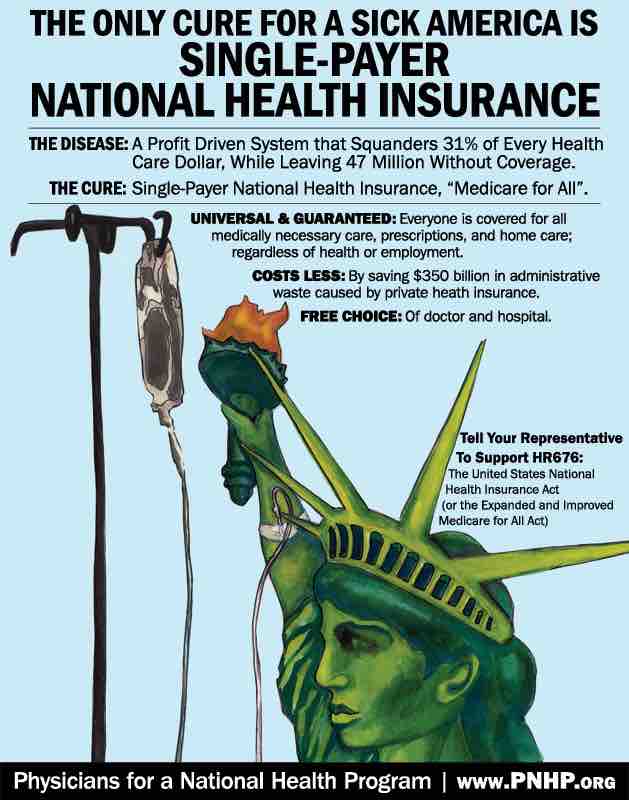Background
Health care policy can be defined as the decisions, plans, and actions that are undertaken to achieve specific health care goals within a society. According to the World Health Organization (WHO), an explicit health policy achieves several things: it defines a vision for the future; it outlines priorities and the expected roles of different groups; and it builds consensus and informs people.
In many countries individuals must pay for health care directly out-of-pocket in order to gain access to health care goods and services. Individuals of these countries also have to pay private sector players in the medical and pharmaceutical industries to develop research. The planning and production of health human resources is distributed among labor market participants.
Health care in the United States is provided by many different organizations. Health care facilities are largely owned and operated by private sector businesses. The government primarily provides health insurance for public sector employees. 60-65 percent of healthcare provisions and spending comes from programs such as Medicare, Medicaid, TRICARE, the Children's Health Insurance Program, and the Veterans Health Administration. Most of the population under 65 is insured by his/her or a family member's employer, some buy health insurance on their own, and the remainder are uninsured.
The current active debate about health care reform in the United States concerns questions of a right to health care, access, fairness, efficiency, cost, choice, value, and quality. Some have argued that the system does not deliver equivalent value for the money spent. The United States pays twice as much for health care, yet lags behind other wealthy nations in measures such as infant mortality and life expectancy. In fact, the United States has a higher infant mortality rate than most of the world's industrialized nations.
The Role of Government in the Health Care Market
Numerous publicly funded health care programs help provide for the elderly, disabled, military service families, veterans, children, and the poor. Additionally, the federal law ensures public access to emergency services regardless of the ability to pay. However, a system of universal health care has not been implemented nation-wide. Nevertheless, as the Organization for Economic Co-operation and Development (OECD) has pointed out, the total U.S. public expenditure for this limited population would, in most other OECD countries, be enough for the government to provide primary health insurance for the entire population. Although the federal Medicare program and the federal-state Medicaid programs possess some monopolistic purchasing power, the highly fragmented buying side of the U.S. health system is relatively weak by international standards, and in some areas, some suppliers such as large hospital groups have a virtual monopoly on the supply side. In most OECD countries, there is a high degree of public ownership and public finance. The resulting economy of scale in providing health care services appears to enable a much tighter grip on costs. The United States, as a matter of oft-stated public policy, largely does not regulate prices of services from private providers, assuming the private sector could do it better.
Examples of Health Care Reform
Massachusetts has adopted a universal health care system through the Massachusetts 2006 Health Reform Statute. It mandates that all residents who can afford to purchase health insurance must do so, and it provides subsidized insurance plans so that nearly everyone can afford health insurance. The law also provides a "Health Safety Net Fund" to pay for necessary treatment for those who cannot find affordable health insurance or for those who are not eligible. In July 2009, Connecticut similarly passed a law called SustiNet, with the goal of achieving health-care coverage for 98 percent of its residents by 2014.
Advocates for single-payer health care often point to other countries, where national government-funded systems produce better health outcomes at a lower cost. A single-payer universal health care plan for an entire population can be financed from a pool to which many parties such as employees, employers, and the state have contributed. Opponents deride this type of system as socialized medicine, and it has not been one of the favored reform options by Congress or the President in both the Clinton and Obama reform efforts. It has been pointed out that socialized medicine is a system in which the government owns the means of providing medicine. Britain's health care system is an example of this socialized system, along with the Veterans Health Administration program in America. Medicare is an example of a mostly single-payer system, as is France's system. Both of these systems have private insurers to choose from, but the government is the dominant purchaser.

Physicians for National Healthcare Poster
Single payer health care poster about the United States National Health Care Act.